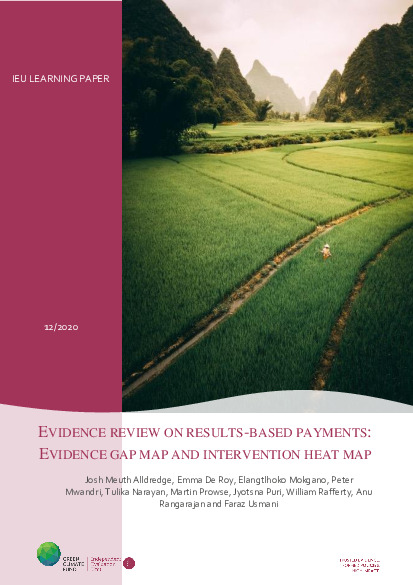Evidence gap map and intervention heat map: Evidence review on results-based payments

Evidence gap map and intervention heat map: Evidence review on results-based payments
The evidence gap map presents a systematic, multisectoral search of publications in the academic and grey literature. The search was restricted to quantitative studies published between 2000 and 2020 that assessed the effectiveness of one or more RBP interventions using experimental, quasiexperimental or non-causal designs. Based on sector-, intervention- and implementation-related characteristics extracted from a sample of 428 studies that met these inclusion/exclusion criteria, we developed an evidence gap map (EGM). The EGM followed a consistent intervention/outcome framework to highlight the distribution of the evidence base on the impacts of various RBP interventions on beneficiary-, service-provider- and investor/system-level outcomes. Using the same intervention/outcome framework, we developed an intervention heat map (IHM) that highlights the distribution of 15 approved financial commitments by the Green Climate Fund (GCF) that employ results-based modalities.
- Introduction
- Methods
- Search Results and Descriptive Statistics
- Evidence Gap Map
- Intervention Heat Map
- Discussion
- Conclusion